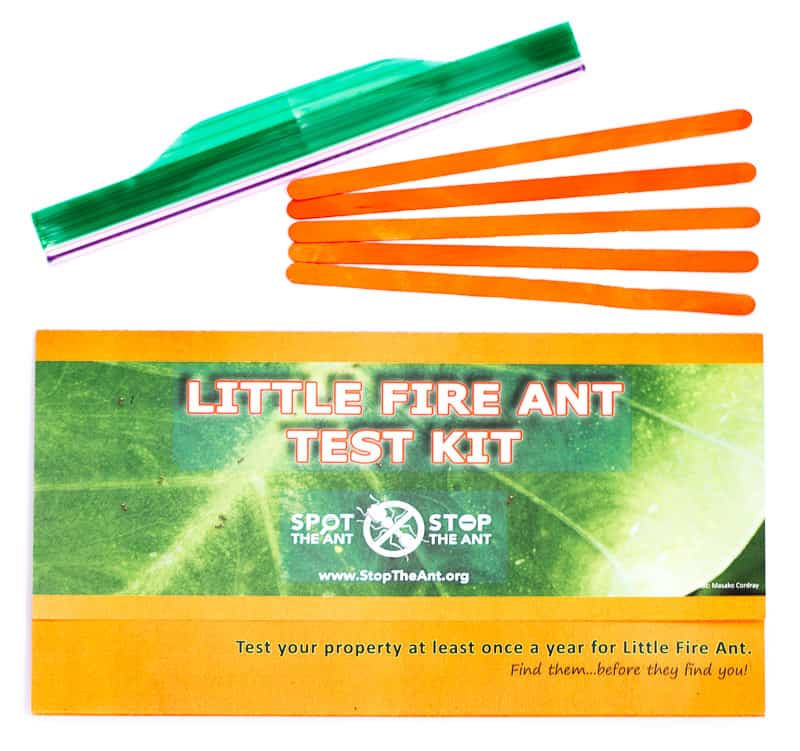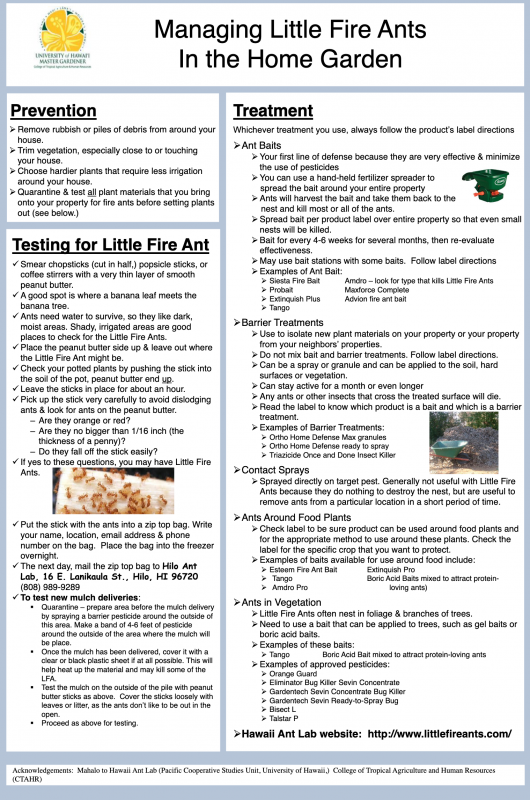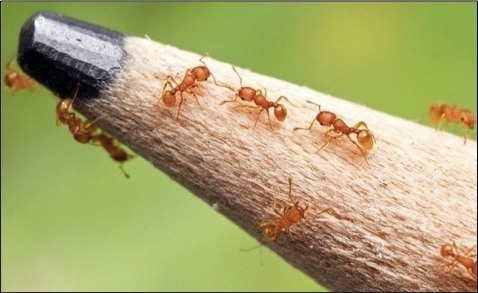Current Status on Molokai
There are currently no known populations of Little Fire Ants on Molokai.
Since the discovery of Little Fire Ants (LFA) on the Big Island in 1999, the Hawaii Department of Agriculture has enacted quarantine regulations to prevent the shipment of potted plants infested with little fire ant from the Big Island to other islands.
PLEASE REPORT ANY LFA SUSPICIONS ON MOLOKAI IMMEDIATELY! CALL LORI BUCHANAN at (808) 336-0625 —- or EMAIL: molokaiinvasive@gmail.com —- or call Statewide pest hotline at (808) 643-PEST
Description:
- This ant is orange-red to light brown in color, all workers are 1.5 mm in length (half the size of a sesame seed, or as long as a penny is thick, about 1/16 “)
- Slow-moving, easily dislodged from leaves, plants, and trees
- Prefers moist conditions, forming colonies on the ground AND in trees
- Native to Central and South America, LFA were accidentally introduced as hitchhikers on imported plants
Harm:
- Delivers a painful sting when disturbed. Welts can last for weeks
- Infests agricultural fields and farms, where they damage crops and sting workers
- Promotes plant pests such as aphids, white flies and scale insects, which secrete plant sap that the ants eat. In turn, the ants protect these insects from natural predators and parasites.
- Easily blown out of trees, stinging when they get are caught in hair or clothing.
- Infests homes, beds, furniture and food
- Has been linked to corneal clouding and blindness in pets
- In the Galapagos, LFA attack tortoise hatchlings and sting the eyes of adult tortoises
- Infest bee hives, preying on the larvae and eventually destroy the hive.
- Large infestations are difficult and expensive to control
How to Survey for LFA:
- Smear a thin coat of peanut butter on one end of a disposable chopstick or popsicle stick. (A thick coat is no more attractive to ants and only makes identification more difficult). If you are allergic to peanuts, use small pieces of luncheon meat and tongs to retrieve the pieces.
- Place sticks in shady areas in, around, and on plants, including potted plants. For a thorough survey, place at least three sticks per plant, and/or one stick every two feet. Leave the sticks out for 45 minutes to 1 hour.
- Carefully pick up the sticks (so the ants don’t fall off!), and seal them in a plastic bag. Write your name, contact number, and the date on the bag and freeze for 24 hours to kill the ants. An address is helpful, but not required.
- Just because you have ants, doesn’t mean they are little fire ants. Some ants are look-alikes and require an expert to identify them. Turn in ALL ant samples for identification and peace of mind.
- Ant samples can be turned in to MoMISC (call or email to set up) or sent by postal mail directly to: Hawai`i Ant Lab, 16 E. Lanikaula St, Hilo HI 96720
Click Here to Request a Free Test Kit from Hawaii Ant Lab 
Additional Resources:
Hawaii Ant Lab https://littlefireants.com/




